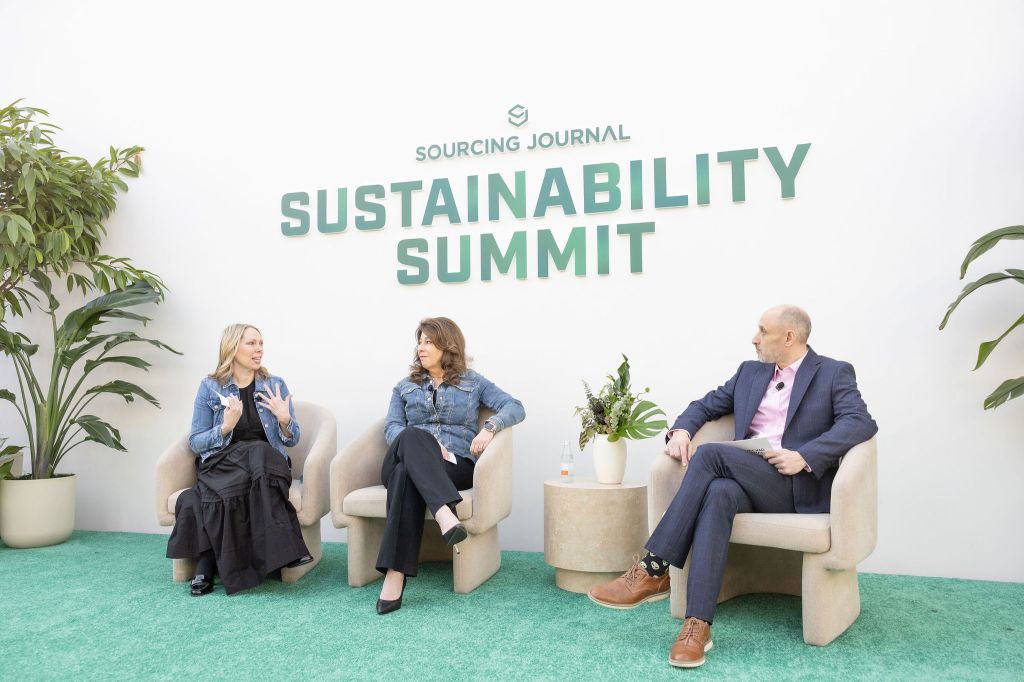Physical Address
304 North Cardinal St.
Dorchester Center, MA 02124
Physical Address
304 North Cardinal St.
Dorchester Center, MA 02124

Consumer centricity is an oft-cited best practice for retail services and marketing, and sustainability outreach is no different. To effectively encourage environmentally conscious consumer behavior, brands must cater their messaging to align with laypeople’s understanding of eco-friendly attributes and build initiatives that fit with shoppers’ existing behaviors.
During a panel at Sourcing Journal’s Sustainability Summit, moderated by editor-in-chief Peter Sadera, executives from Cotton Incorporated dug into data from the research and promotion organization’s surveys of thousands of global shoppers that show “The Consumer Disconnect,” namely the gap in consumers’ understanding of sustainability terms and claims. One common thread from the research is that touting sustainability alone is often not enough to move the needle. “Sustainability is not always top of their list when they’re shopping for their clothing,” said Melissa Bastos, director, corporate strategy and insights at Cotton Incorporated.
Although brands are increasingly talking about sustainability at a corporate level, this doesn’t always translate to product descriptions. Cotton Incorporated studied a sampling of 8 million products, and among those, just 11 percent used sustainability terms. The most commonly used descriptors were “natural,” “recycled,” “organic,” “sustainable” and “eco-friendly.”
When communicating about sustainability, companies must consider consumers’ understanding of terms. In a Cotton Incorporated survey, over half of consumers said they had some knowledge of terms like “locally made,” “recycled,” “sustainable,” “environmentally friendly,” “natural” and “organic.” Bastos noted that much of this vocabulary is used beyond the fashion industry—such as in grocery stores—boosting shoppers’ familiarity with the concepts. Fewer consumers are confident in their understanding of terms like “plant-based,” “regenerative agriculture” and “circular.” When asked to define circularity, some shoppers were far from the mark, with some guessing it has to do with blood circulation or textile prints featuring circles.
To bridge this understanding gap, Kim Kitchings, senior vice president, consumer marketing at Cotton Incorporated, suggested a balance of promotional and educational messaging. Marketing should stick to what consumers know, using widely understood terms like “natural” and “recyclable.” Brands can also play up durability, a sought-after trait commonly associated with sustainability. To provide education, Cotton Incorporated has partnered with platforms like podcasts to get the word out. “We want to educate and help bring the consumer along, not confuse them any more than they already are,” she said.
Kitchings also noted the need for more standardization of terminology and claims, pointing out that the Federal Trade Commission (FTC) guidelines were last updated in 2012, predating many communication and cultural shifts like the rise of TikTok.
Communication matters, but consumers are not always looking at product descriptions to deduce whether something is eco-friendly. According to a Cotton Incorporated survey, 42 percent of consumers said that price was the primary clue they would use to determine if merchandise is sustainable, since they associate higher costs with eco-friendly products. Four out of 10 consumers would look for natural fibers, and around one-third seek out recycled materials or recyclable items. Additionally, 32 percent search for brands they trust.
About half of consumers surveyed by Cotton Incorporated said there had been a time where they spent more than planned and the item bought was sustainable. Despite choosing a sustainable garment, they reported their purchase decisions rested primarily on other factors like durability and quality. “They’re looking for those attributes that they seek out in clothing, regardless if they’re looking for sustainable clothing or not,” said Bastos. “They always want it to fit well, they want it to be comfortable, they want it to be the quality that they’re looking for and expecting.”
Further indicating that sustainability is a less common purchase driver, 80 percent of consumers are concerned about the environment, yet only 57 percent say sustainability at least partly influences their clothing purchases.
Among the consumers who aren’t currently motivated to shop for sustainable goods, the top reason is simply not thinking about or prioritizing it, with 45 percent saying it’s not a consideration. Around 30 percent of consumers struggle to find sustainable clothing, and 30 percent say they are too pricey. Another cohort doesn’t see a correlation between fashion and sustainability concerns. While 19 percent of all consumers take this stance, 25 percent of Gen Z separates sustainability and clothing, and 23 percent of this generation don’t believe their clothing purchases will make a difference.
Where consumers are taking action is in recycling, with 65 percent recycling overall and 57 percent recycling clothing. Meeting consumers where they are and helping them act on the impulse to recycle, Cotton Incorporated created the Blue Jeans Go Green program to establish streams for used denim. The intent is to make it convenient not just for consumers, but also for the brand and retailer partners that provide drop-off spots or power mail-in donations. This concept has since expanded to the U.K. with Cotton Lives On. “We have to find those solutions that are convenient and culturally relevant, or they fall flat,” said Kitchings.